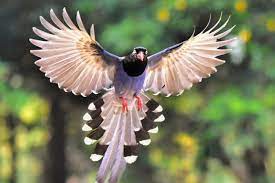River Devika Rejuvenation Project (PIB)

- 07 Aug 2023
What is the News ?
Recently, Union Minister of State (Independent Charge) Science & Technology sheds light on the progress of the River Rejuvenation Project, Devika. This initiative, inspired by the Namami Ganga campaign, aims to safeguard the sacred Devika River’s purity and health.
Facts About:
Comprehensive Waste Management:
- Focus on Liquid Waste Management.
- Creation of a network of pipes and manholes connecting households.
- Objective: Efficient disposal of liquid waste, preventing pollution, and preserving the sanctity of the river.
Complementary Solid Waste Management:
- Encompasses responsible collection, disposal, and management of solid waste.
- Essential to prevent environmental degradation and maintain river and surrounding health.
Financial Allocation Breakdown:
- Project investment exceeds Rs 190 crores.
- Allocation shared between Central and Union Territory (UT) at a 90:10 ratio.
Empowering Communities through PRIs:
- Panchayati Raj Institutions (PRIs) pivotal for grassroots project success.
- PRIs’ involvement enhances community engagement, fosters ownership, and promotes sustainable development practices.
Devika River:
- Originates from Suddha Mahadev temple in Jammu and Kashmir’s Udhampur district.
- Flows through western Punjab (now Pakistan) where it merges with the Ravi River.
Cultural Significance:
- Revered by Hindus as sister of the Ganga River.
- Devika River believed to be a manifestation of Goddess Parwati, benefiting the people of MaderDesha (areas between river Ravi and Chenab).
Source: https://pib.gov.in/PressReleaseIframePage.aspx?PRID=1946187
Revised manufacturing rules for drug firms (Indian Express)
- 07 Aug 2023
What is the News ?
Recently the center government directed all pharmaceutical companies in the country to implement the revised Good Manufacturing Practices (GMP).
Facts About:
Directions by the Government:
- Larger companies with a turnover of over Rs 250 crore have been asked to implement the changes within six months.
- The medium and small-scale enterprises with turnover of less than Rs 250 crore have been asked to do so within a year.
About Good Manufacturing Practices (GMP):
- Quality Management: It is a set of guidelines and quality management principles which ensure pharmaceutical products, as well as other products in the food and healthcare industries, are consistently produced and controlled to meet quality standards appropriate for their intended use.
- Aspects Include: It covers all aspects of the manufacturing process, including the premises, equipment, personnel, materials, production, quality control, documentation, and storage of finished products.
Need for the Improved Standards:
- To match up with the Global Standards: Implementation of the new norms will bring the Indian industry on par with global standards.
- Only 2,000 of the 10,500 drug manufacturing units in the country at present meet global standards, being WHO-GMP certified.
- The improved standards will ensure that pharmaceutical companies follow standard processes, quality control measures, and do not cut corners, improving the quality of medicines available in India as well as sold in the global market.
- To improve Indian Products Image: There have been a string of incidents where other countries have reported alleged contamination in India-manufactured syrups, eye-drops, and eye ointments.
- The deaths of 70 children in the Gambia, 18 children in Uzbekistan, three persons in the United States, and six deaths in Cameroon have been linked to these products.
- To rectify the Deficiencies: A risk-based inspection of 162 manufacturing units by the government found several deficiencies — incoming raw materials not being tested before use, product quality not being reviewed , absence of quality failure investigation, infrastructure deficiency to prevent cross-contamination, faulty design of manufacturing and testing areas, missing qualified professionals, and poor documentation.
- To Provide a Structure to the Draft: Implementation of the revised good manufacturing practices (GMP) as listed in the 2018 draft schedule M of the drugs and cosmetics rules.
Major Changes & Significance:
- Standard & Reliable Quality: The revised GMP guidelines focus on quality control measures, proper documentation, and IT backing to maintain quality of medicines produced.
- Review & Validation: It introduces pharmaceutical quality systems, quality risk management, product quality review and validation of equipment.
- Thorough Investigation: Carrying regular quality reviews of all its products, verify consistency of the quality and the processes, thorough investigation of any deviation or suspected defect and implementation of any preventive actions.
- Evaluation of Changes: It also suggests a change control system to evaluate all changes that may affect the production or quality of the product.
- Maintenance of Stability & Required Conditions:The companies will also be needed to mandatorily maintain the drugs in a stability chamber, set the proper temperature and humidity, and carry out an accelerated stability test as well.
- Data Safety & Security: The guidelines also state that companies should have GMP-related computerized systems, which ensure that there is no tampering of data related to the processes.
- In case sensitive data is entered manually to the system, there will be additional checks to validate the accuracy of the data. Backups would also be created to ensure there is no loss of data.
Conclusion:
The step taken is a required and desirable one. Instituting the same quality across the industry will give confidence to regulators from other countries and will improve the quality of drugs in the domestic markets.
Source: https://indianexpress.com/article/explained/explained-health/revised-manufacturing-rules-for-drug-firms-what-changes-and-why-8879305/
5% of birds in India are endemic (The Hindu)

- 07 Aug 2023
What is the News ?
A publication, titled ‘75 Endemic Birds of India’, which was released on the 108th foundation day of the Zoological Survey of India (ZSI), points out that about 5% of birds found in the country are endemic and are not reported in other parts of the world.
Facts About:
India’s bird species:
- India is home to 1,353 bird species, which represents approximately 40% of global bird diversity.
- Of these 1,353 bird species, 78 species, which is around 5%, are endemic to the country.
About the Publication:
- The publication highlights the importance of endemic bird species in the country.
- The details of endemic bird species contained in the publication include etymology (meanings of scientific names) and their historical relevance along with vital facts such as subspecies’ differences, distinguishing traits, preferred habitats, breeding habits, and food preferences.
- Objective: The publication is aimed at making information about endemic birds of the country available to everyone, and highlighting the efforts to conserve species that are found only in restricted areas.
Highlights from the Publication:
- Around 75 bird species belong to 11 different orders, 31 families, and 55 genera, and exhibit remarkable distribution patterns across various regions in India.
- The highest number of endemic species has been recorded in the Western Ghats, with 28 bird species.
- Some of the rare species recorded in the country’s bio-geographic hotspot are;
- The Malabar Grey Hornbill (Ocycerosgriseus)
- Malabar Parakeet (Psittaculacolumboides
- Ashambu Laughing Thrush (Montecinclameridionalis)
- The White-bellied Sholakili (Sholicolaalbiventris)
- Amongst them 25 bird species are endemic to the Andaman and Nicobar Islands. Bird species which are only found in the Andaman and Nicobar Islands are;
- Nicobar Megapode (Megapodiusnicobariensis);
- Nicobar Serpent Eagle (Spilornisklossi);
- Andaman Crake (Rallinacanningi); and
- Andaman Barn Owl (Tytoderoepstorffi).
- Four species of birds are endemic to the Eastern Himalayas, and one each to the Southern Deccan plateau and central Indian forest.
- Of the 78 endemic species, 25 are classified as ‘Threatened’ by the IUCN.
- Three species are listed as ‘Critically Endangered’.
- Five of the endemic birds in India are categorised as ‘Endangered’, and
- 17 as ‘Vulnerable’,
- While 11 are categorised as ‘Near Threatened’ on the IUCN Red List.
Source: https://www.thehindu.com/sci-tech/energy-and-environment/5-of-birds-in-india-are-endemic-reveals-zoological-survey-of-india-publication/article67162268.ece#:~:text=India%20is%20home%20to%201%2C353,are%20endemic%20to%20the%20country
India's Sugar Surplus and its Impact on Agriculture (The Hindu)

- 07 Aug 2023
What is the News ?
India became the world’s top sugar producer in 2021-2022, surpassing Brazil, but the extensive use of resources in sugar production is depleting rapidly, leading to a potential crisis in the future.
Facts About:
The Factors Behind Excessive Sugar Production
- The phenomenon of India's excess sugar production can be attributed to a confluence of factors, including government policies and measures aimed at promoting sugarcane cultivation. At the heart of this lies the fair and remunerative price (FRP) scheme, a government initiative ensuring that sugar mills pay sugarcane farmers a minimum price, thereby ensuring their fair profits
- State governments have further incentivized sugarcane cultivation through substantial subsidies, which some critics argue are aimed at securing the votes of farmers in politically influential rural regions.
- The repercussions of these policies have led to a significant sugar surplus, driving up exports to record levels. However, this expansionary approach has not escaped global scrutiny. Brazil, Australia, and Guatemala raised objections with the World Trade Organization (WTO), alleging that India's excessive export subsidies and domestic support violate international trade rules. The subsequent ruling against India by the WTO underscored the global ramifications of this sugar surplus.
Addressing the Excess Sugar Production: Ethanol as a Solution
- To mitigate the challenges posed by surplus sugar production, the Indian government has explored alternative avenues, with a focus on diverting excess sugar to ethanol production. Ethanol, a versatile organic compound derived from fermenting sugarcane molasses or sugar, has a range of applications in various industries, from alcoholic beverages to chemicals and cosmetics.
- In the realm of transportation, ethanol-blended petrol (EBP) has emerged as an effective strategy to reduce harmful emissions from vehicles, contributing to reduced crude oil imports and greenhouse gas emissions.
- The government's Ethanol Blended Petrol (EBP) program, initiated in 2003, has made significant strides, aiming to achieve a blending rate of 20% by 2025. Reductions in the Goods and Services Tax (GST) on ethanol have further supported this transition.
- Efforts to channel a substantial portion of sugar towards ethanol production have yielded positive results, highlighting a potential solution to the problem of excess sugar.
Groundwater Depletion and Environmental Consequences
- While India's EBP program has succeeded in reducing certain imports and emissions, it has also unearthed environmental concerns associated with sugarcane cultivation. The intensive water requirements of sugarcane, coupled with over-cultivation, have significantly impacted groundwater resources. This trend is particularly pronounced in India's top sugarcane-growing states, which rely heavily on groundwater for irrigation.
- With sugarcane demanding approximately 3,000 mm of rainfall for optimal growth, regions that typically receive 1,000-1,200 mm of rainfall resort to excessive groundwater extraction from confined aquifers. A startling statistic emerges – the cultivation of 100 kg of sugar necessitates a staggering two lakh liters of groundwater for irrigation. This alarming scenario has escalated concerns, particularly in drought-prone and groundwater-stressed areas, threatening the availability of this vital resource.
Sustainable Solutions and the Path Forward
- To safeguard India's agricultural sector from a looming crisis and ensure its long-term sustainability, a multifaceted approach is imperative. While the allure of financial gains from sugar surplus and exports is undeniable, a shift towards balanced and sustainable agricultural practices is essential.
Diversified Subsidy Schemes
- A crucial step involves reevaluating incentive structures that disproportionately favor sugarcane cultivation over other crops. By introducing comprehensive and fair subsidy schemes for a variety of crops, farmers can be encouraged to diversify their cultivation practices. Such measures can prevent monocultures, promote equitable income distribution, and contribute to more efficient resource utilization.
Environmentally Responsible Cultivation
- The adoption of environmentally conscious cultivation practices holds the key to mitigating the groundwater depletion crisis. Implementing methods such as drip irrigation, which directs water directly to the roots of sugarcane plants, can significantly reduce water consumption compared to traditional flood irrigation techniques. Government support through subsidies for setting up drip irrigation systems can accelerate this transition.
Integrated Water Management
- India's agricultural landscape requires a comprehensive approach to water management, encompassing rainwater harvesting, wastewater treatment, and improved canal irrigation networks. By minimising stress on groundwater reservoirs and exploring alternative water sources for irrigation, the strain on vital resources can be alleviated.
Investment in Research
- Despite significant strides, gaps remain in understanding groundwater availability and distribution. Investing in comprehensive groundwater research and data collection is essential for informed decision-making and sustainable resource management.
Conclusion:
As India assumes a prominent role in the global agricultural arena, the imperative for sustainability becomes increasingly apparent. While the achievements in sugar production are commendable, the nation must navigate the delicate balance between economic gains and environmental responsibility. By reassessing subsidy structures, promoting diversified cultivation practices, and embracing environmentally conscious techniques, India can pave the way for a resilient agricultural sector that not only based on the article: meets domestic demands but also ensures the well-being of future generations.
Source: https://www.thehindu.com/sci-tech/energy-and-environment/india-excess-sugar-production-guzzling-groundwater/article67157121.ece
Organ shortage continues to cost lives (The Hindu)
- 07 Aug 2023
What is the News ?
According to recent data, around three lakh patients wait for organ donation in the country.
About:
- the number of donors (including cadavers) grew from 6,916 in 2014 to only 16,041 in 2022.
- The country registered 1,589 kidney, 761 liver and 250 heart transplants in the deceased category that year.
- Kidney and pancreas transplants grew from 3 in 2014 to 22 in 2022.
- In contrast, living donor kidney transplants rose from 4,884 in 2014 to 9,834 in 2022.
- Liver transplants in this category grew from 1,002 to 2,957
- one person is added to the waitlist every 10 minutes in the country
Ministry’s steps to enhance organ donations
- doing away with the domicile rule
- removal of age bar for registration of recipients
- removal of fee for registration for transplant
- easing rules on withdrawal of life support (passive euthanasia)
- facilitation of organ transport across the country
- giving special casual leave for employed organ donors
The annual need for 2,00,000 kidney transplants highlights the pressing urgency of the situation.
- However, a mere 10,000 transplants are performed each year, revealing a staggering gap.
- The demand for deceased donors is substantial because many families lack suitable living donors.
- Therefore, relying on deceased donors can help partially meet this demand
- statistics indicate around 70%-75% of donors are women. Wives, mothers, and sisters have emerged as the most prevalent sources of donatio
Organ donation pledges in India need to translate into actual donations and for that, medical staff need to be educated.
- They must be able to recognise, identify, inform, and counsel familiesabout brain death and the importance of organ donation.
- The gap between demand and supply continues to be tremendous. So, there is a need to equip our ICU staff with knowledge and awareness, the sooner the gap will close.
Greater awareness will improve in following way
- One cadaver can save up to eight lives.
- Two donated kidneys can free two patients from dialysis treatment.
- One donated liver can be split among two patients on the waitlist.
- Two donated lungs mean two other patients are given a second chance, and a donated pancreas and donated heart translate to two more patients receiving the gift of life.
- One tissue donor — someone who can donate bone, tendons, cartilage, connective tissue, skin, corneas, sclera, and heart valves and vessels — can save the lives of as many as 75 people.
Source: https://www.thehindu.com/sci-tech/health/indias-poor-organ-donation-record-continues-to-cost-lives/article67161978.ece#:~:text=Three%20lakh%20patients%20wait%20for,donor%20can%20save%20several%20lives
